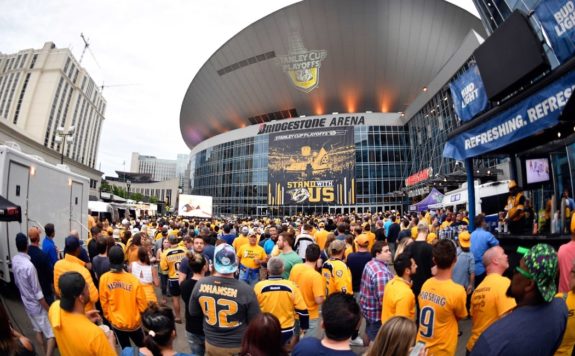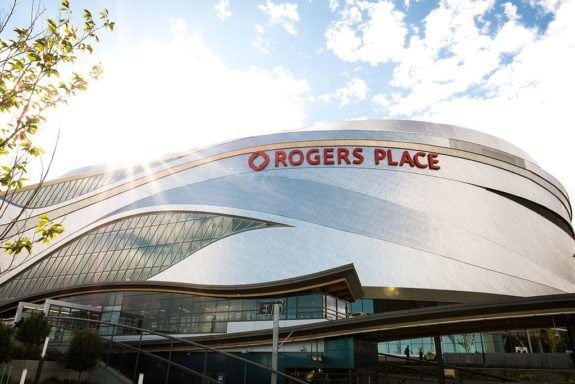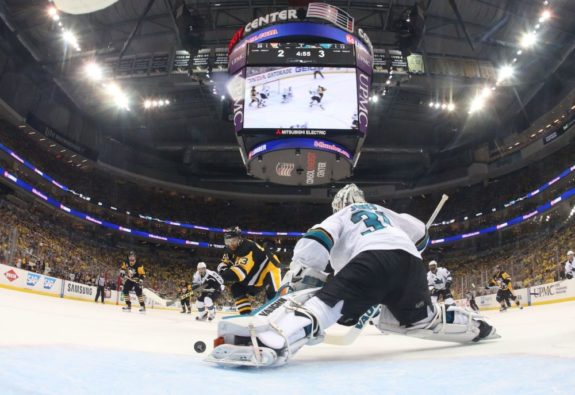![]()
The game-day experience for today’s hockey fan has changed significantly over the last 10 years. As a fan, you are no longer entertained exclusively by the game itself. You expect that the entertainment value of the off-ice experience will match or even exceed the on-ice product. Most hockey organizations have listened and reacted to these expectations by providing new forms of entertainment both inside and outside the arena. Fans are no longer satisfied with tailgate parties alone.
The disruptive force behind these changes is technology, and it will continue to be the most influential force in the sports entertainment business. The emergence of the internet, mobile devices, social media platforms, high definition video, and live streaming is changing the way you, as a hockey fan, embrace the game.
Despite being an old-school hockey executive in NHL hockey circles, 78-year-old Jeremy Jacobs, the owner of the Boston Bruins and Chairman of the NHL Board of Governors, recognized the importance of technology for his team and the NHL. Jacobs showed his commitment to study how technology with affect sport by sponsoring a report published in 2015 called “The Future of Sport.”
The report predicts that the middle-class fan will be priced out of the live game market in the next ten years. The estimate is that only ten percent of the sports fan base will be able to afford to attend games in person, with the remaining ninety percent electing to experience the game at a third venue, watch it at home, or on their mobile device. This trend will provide new business opportunities for sports bars, movie theatre simulcasts, jumbotron simulcasts, and arena pavilions.
Game-Day Experience Outside the Arena
Hockey organizations will be forced to deal with a “diminished appetite” amongst fans for live games. They will need to offer opportunities for fans to share the game experience outside the arena through the construction of family-friendly pavilions and jumbotrons adjacent to the facility.
Do you remember game three of the 2017 Western Conference Final in Nashville between the Predators and Anaheim? The Nashville Predators organization catered to their fans that could not buy tickets by erecting large video screens in the streets surrounding Bridgestone Arena and offering food, drinks, and musical entertainment. The result was over 50,000 fans flocked to the downtown area to share the excitement of the playoffs with fellow Predators fans. This creative game-day strategy provided a unique platform to increase overall local fan engagement while providing new revenue opportunities for the organization.

Third party venues like sports bars and movie theatres are also providing a viable alternative for fans to engage with other fans on game-days. Advances in entertainment technology, like 3-D displays and virtual and augmented reality in third venues, will become an extension of the live game experience and allow fans to interact with other passionate fans at affordable prices. Hockey organizations will need to develop partnership and marketing strategies to capitalize on the new revenue opportunities generated by engaging these third venues.
Game-Day Experience Inside the Arena
Organizations will need to develop platforms and hire full-time technology experts that will enhance fan technology capabilities in league arenas. Fans are expecting a seamless wireless platform that they can access to share their game experience with others, not in attendance. The opportunity for teams is that hockey fans can create and manage content to enhance the off-ice experience for everyone in the building, while data can be collected to assess your online engagement.
Technology capabilities in the current venues will need to be continuously upgraded to cater to the exponential growth of social media wireless usage during games. The Edmonton Oilers recognized this need with their newly constructed Rogers Place. According to the Edmonton Journal, they spent $15 million on the technology alone to enhance both the game-day experience and wireless capabilities for the fans in attendance (from ‘High-tech Rogers Place Includes Enough Wiring to Wrap Around Planet’, Edmonton Journal – 9/9/16).

You, as a fan, will also be looking for better access to real-time events on the ice through player/coach/referee video capabilities which will be critical to enhance the fan game experience. Some of these capabilities have already been developed with the use of the netcam, Go Pro cameras on referee helmets, and overhead moving cameras.

Teams will need to develop better ticketing technology capabilities to improve your overall fan experience. Financial resources must be allocated for data collection technologies to support dynamic pricing capabilities; apps developed for instant seating upgrades; and digital wallet payments. Fans will demand access to online information during the game regarding concession, washroom, and ticket line-ups. Most importantly, you will be looking for innovative platforms that allow you to interact with the players before and after games.
Hockey executives cannot overlook this emerging technology trend. While costly, it will be critical to commit the needed financial and human capital necessary to fulfill your technology expectations. The biggest challenge for hockey organizations will be to develop new sources of revenue to offset the increased expenses emerging technology brings to the table.